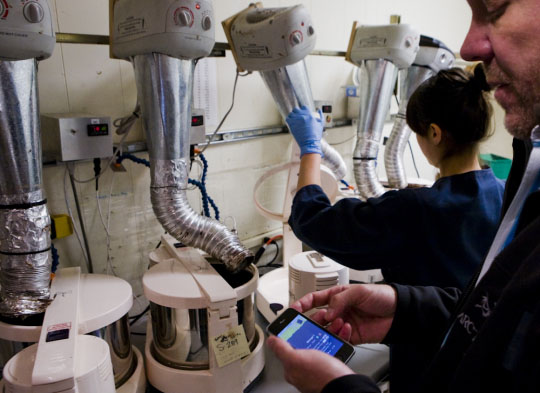Es ist ein großer Schritt für uns: Die next10 zieht nach Berlin. SinnerSchrader und die STATION Berlin veranstalten die next conference ab 2010 gemeinsam. Das Ziel der langfristig angelegten Zusammenarbeit ist, die next in Berlin zum europäischen Leitkongress für die digitale und kreative Wirtschaft auszubauen. Die fünfte next conference findet am 11./12. Mai 2010 in der STATION Berlin unter dem Leitthema Game Changer statt.
Zur next10 werden 2.000 Teilnehmer und über 100 Sprecher aus ganz Europa und den USA erwartet. Die zweitägige Trend- und Netzwerkveranstaltung bringt Kreative und Techniker aus der Internet-, Medien- und Kommunikationsbranche mit Entscheidern zusammen. SinnerSchrader richtet die next conference seit 2006 aus. STATION Berlin ist u.a. der Macher der internationalen Modemesse PREMIUM in Berlin, die auf ihrem Gebiet ebenfalls ein Game Changer ist.
Game Changer brechen Regeln und definieren Geschäftsmodelle neu. Sie sind innovativ und gehen Wagnisse ein, unbelastet von Massenmarketing und Mainstream. Unternehmen ändern die Spielregeln, indem sie auf disruptive Innovationen für neue Produkte und Dienste setzen und es nicht bei der kontinuierlichen Verbesserung des Bestehenden belassen.
Die Welt ist voller Game Changer. Die next10 stellt zwei Tage lang die interessantesten Game Changer aus allen Bereichen der Wirtschaft vor und diskutiert mit ihnen über die wichtigsten Regeln zum erfolgreichen Regelbruch. Der Schwerpunkt liegt auf den Branchen Automotive, Banking, Retail, E-Commerce, FMCG, Mobile, Media, Entertainment, Advertising, Travel, Tourism und Health Care.
Registrieren Sie sich jetzt und sichern Sie sich Ihr Ticket zum Frühbuchertarif. Wir sehen uns im Mai in Berlin!
Mehr dazu:










![Reblog this post [with Zemanta]](http://img.zemanta.com/reblog_e.png?x-id=b0d1ad79-535c-40c8-a6b6-9e3fe0fca4e5)
![Reblog this post [with Zemanta]](http://img.zemanta.com/reblog_e.png?x-id=37c5d87b-93dc-4803-894b-2b7c983d42a2)
![Reblog this post [with Zemanta]](http://img.zemanta.com/reblog_e.png?x-id=0eeebda4-27c9-448c-bd7a-757550eb3450)
![Reblog this post [with Zemanta]](http://img.zemanta.com/reblog_e.png?x-id=a0e3487a-43cc-4cd8-a73d-367aeeef0ac5)